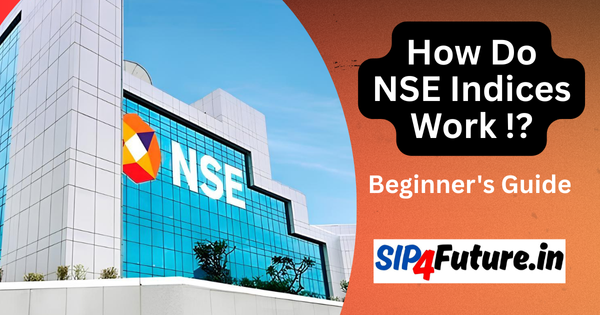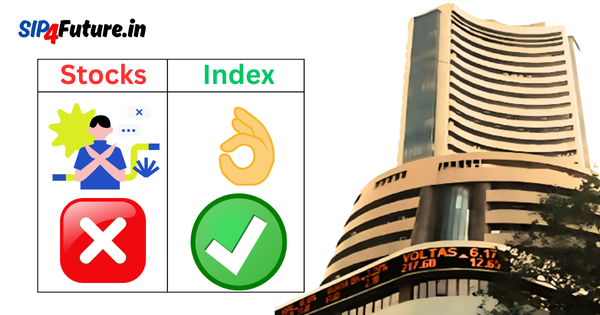Introduction: A Bold Step into PC Manufacturing
Dixon Technologies (India) Limited, a leading name in electronics manufacturing, has taken a significant leap forward by entering the high-growth IT hardware sector through a strategic joint venture with Inventec Corporation. Announced on April 30, 2025, this partnership establishes Dixon IT Devices Private Limited, a new entity focused on manufacturing notebooks, desktops, servers, and related components in India. With Dixon holding a 60% stake and Inventec 40%, this move aligns with India’s Make in India initiative, aiming to strengthen domestic manufacturing and position India as a global IT hardware hub. The primary keyword, Dixon Technologies, reflects the company’s pivotal role in this transformative venture, while secondary keywords like joint venture, PC manufacturing, Inventec, and Make in India highlight the collaboration’s scope and impact.
This article delves into the details of this joint venture, its implications for Dixon Technologies’ stock performance, the broader electronics sector, government policies driving growth, and the global market context. By integrating real-time data and insights, we explore how this partnership positions Dixon Technologies for future growth and its potential impact on investors and the Indian economy.
What Is the Dixon Technologies-Inventec Joint Venture?
The joint venture between Dixon Technologies and Inventec Corporation, a Taiwanese leader in original design manufacturing (ODM) for IT hardware, marks Dixon’s entry into the fast-growing PC manufacturing segment. The new entity, Dixon IT Devices Private Limited, will focus on producing notebook PCs, desktop PCs, servers, and their components, catering to both domestic and international markets. This partnership combines Dixon’s operational excellence in electronics manufacturing with Inventec’s technological expertise, aiming to deliver cost-efficient, high-quality products.
Key Features of the Joint Venture
| Aspect | Details |
|---|---|
| Entity Name | Dixon IT Devices Private Limited |
| Ownership | Dixon Technologies: 60%, Inventec Corporation: 40% |
| Focus Areas | Notebooks, desktops, servers, and components |
| Objective | Enhance IT hardware manufacturing, support Make in India |
| Location | To be established in India, likely in Tamil Nadu or Uttar Pradesh |
The joint venture is a strategic move to capitalize on India’s growing demand for IT hardware, driven by digital transformation, remote work, and increasing penetration of technology in education and businesses. By leveraging Inventec’s expertise—serving global giants like HP, Dell, and Lenovo—Dixon Technologies aims to strengthen its position in the electronics manufacturing services (EMS) sector.
How Does This Joint Venture Align with Make in India?
India’s Make in India initiative, launched in 2014, seeks to transform the country into a global manufacturing hub. The Dixon Technologies-Inventec joint venture aligns seamlessly with this vision by boosting domestic production of IT hardware, reducing reliance on imports, and enhancing export capabilities. The Indian government has introduced several policies, such as the Production-Linked Incentive (PLI) scheme for IT hardware, to support this growth.
Government Policies Driving Growth
The PLI scheme for IT hardware, announced in 2023, offers incentives of 4-6% on incremental sales to encourage local manufacturing. Dixon Technologies has already benefited from similar schemes in the smartphone and electronics sectors, and this joint venture positions the company to tap into the IT hardware PLI benefits. According to a report by The Economic Times, Dixon is investing in display modules, camera modules, and lithium-ion batteries, further integrating backward to reduce costs and enhance competitiveness.
Additionally, the Tamil Nadu government’s proactive approach to attracting electronics manufacturers has played a crucial role. Dixon’s recent ₹1,000 crore investment in a laptop manufacturing facility near Chennai, in partnership with HP, underscores the state’s appeal as a manufacturing hub. This joint venture with Inventec is likely to leverage similar infrastructure, creating synergies with Dixon’s existing facilities.
Why Is PC Manufacturing a Game-Changer for Dixon Technologies?
Dixon Technologies has established itself as India’s largest home-grown EMS company, manufacturing products for brands like Samsung, Xiaomi, and OnePlus. Its foray into PC manufacturing diversifies its portfolio, tapping into a high-growth segment projected to reach $500 billion by 2030. The joint venture with Inventec positions Dixon to capture a significant share of this market, driven by several factors.
Expanding Market Opportunities
The global PC market, while mature, continues to see demand due to hybrid work models, gaming, and enterprise digitization. In India, the PC market is expected to grow at a CAGR of 11% from 2023 to 2028, fueled by government initiatives like Digital India and increasing consumer affordability. By manufacturing notebooks, desktops, and servers locally, Dixon Technologies can cater to this demand while benefiting from lower production costs compared to China.
Strengthening Supply Chain Resilience
The joint venture enhances supply chain resilience, a critical factor in the post-COVID era. With global companies diversifying away from China due to geopolitical tensions and trade disruptions, India has emerged as an alternative manufacturing hub. Apple’s $22 billion iPhone assembly in India during FY 2024-25, a 60% jump from the previous year, highlights this shift. Dixon’s partnership with Inventec positions it to attract similar contracts from global PC brands, boosting export potential.
What Impact Does This Have on Dixon Technologies’ Stock Performance?
On April 30, 2025, Dixon Technologies’ stock closed at ₹16,395.00 on the National Stock Exchange (NSE), reflecting a slight decline of 1.32%. Despite this daily dip, the announcement of the Inventec joint venture has been met with positive sentiment, as reflected in posts on X. Investors view this partnership as a catalyst for long-term growth, given Dixon’s strong track record and the high-growth potential of the IT hardware segment.
Recent Stock Performance
| Metric | Value |
|---|---|
| Closing Price (30.04.25) | ₹16,395.00 (-1.32%) |
| Market Cap | ~₹1 lakh crore (as of April 22, 2025) |
| 52-Week High | ₹16,975.80 (April 22, 2025) |
| Historical Returns | 354% in 2 years, 1819% in 5 years |
Dixon’s stock has delivered stellar returns, with a 2580% gain over the past decade, as noted on X. The joint venture announcement aligns with positive analyst outlooks, with brokerages like HSBC setting a target price of ₹20,000, citing Dixon’s expansion into high-margin segments.
Sectoral and Global Influences
The electronics manufacturing sector has been a bright spot in India’s stock market, driven by global supply chain shifts and favorable government policies. The US-China trade war, with tariffs escalating to 145% on Chinese goods, has further incentivized companies to shift manufacturing to India. Dixon Technologies, along with peers like Kaynes Technology and PG Electroplast, has benefited from this trend, with stock gains of 5-10% following tariff exemptions on electronics in April 2025.
However, global market volatility, driven by fears of a US recession and fluctuating oil prices, poses risks. The Indian market experienced its worst selloff in 10 months on April 7, 2025, due to US tariff announcements. Despite these challenges, Dixon’s focus on domestic demand and export growth mitigates some risks, making it a standout in turbulent times.
How Are Government Decisions Shaping Dixon’s Growth?
Government policies have been instrumental in Dixon Technologies’ rise as a manufacturing powerhouse. Beyond the PLI scheme, the government’s decision to reduce import duties on certain electronics components has lowered production costs, boosting margins for EMS companies. Additionally, temporary tariff relief announced by the US in April 2025 has made Indian electronics exports 20% cheaper than Chinese alternatives, further benefiting Dixon.
Tamil Nadu’s Role
The Tamil Nadu government’s investment-friendly policies have attracted major players like Dixon Technologies, Foxconn, and Pegatron. The state’s ₹10,14,368 crore investment commitments since May 2021 have created 32 lakh jobs, with Dixon’s ₹1,000 crore laptop facility in Oragadam contributing significantly. The Inventec joint venture is likely to leverage this ecosystem, creating an estimated 5,000 jobs and enhancing Tamil Nadu’s status as an electronics hub.
What Is the Global Market Scenario Impacting Dixon Technologies?
The global electronics market is undergoing a transformative phase, driven by supply chain diversification, technological advancements, and geopolitical shifts. India’s emergence as a manufacturing alternative to China has been accelerated by the US-China trade war and tariff exemptions on electronics. Dixon Technologies is well-positioned to capitalize on these trends, particularly in the PC manufacturing segment.
Competitive Landscape
Dixon faces competition from domestic players like Kaynes Technology, PG Electroplast, and Amber Enterprises, as well as global giants like Foxconn. However, its partnerships with leading brands and investments in backward integration—such as display and camera module manufacturing—give it a competitive edge. The joint venture with Inventec further strengthens its technological capabilities, enabling it to compete with established ODMs.
Risks and Challenges
Despite its growth prospects, Dixon Technologies faces challenges, including global economic uncertainty and potential tariff volatility. The Indian smartphone market contracted by 8% year-on-year in Q4 FY25, impacting EMS companies. Additionally, Dixon’s stock has experienced corrections, losing 28.63% in three months as of April 7, 2025, reflecting market volatility. Investors must weigh these risks against the company’s long-term potential.
When Will Dixon Technologies See the Benefits of This Joint Venture?
The Dixon Technologies-Inventec joint venture is expected to yield benefits in the medium to long term, with production likely commencing in 2026. The facility’s setup, regulatory approvals, and supply chain integration will take time, but Dixon’s experience in scaling operations suggests a smooth rollout. Analysts project that the IT hardware segment could contribute 10-15% to Dixon’s revenue by FY28, driven by domestic demand and export contracts.
Future Outlook and Analyst Targets
| Brokerage | Target Price (₹) | Recommendation | Source |
|---|---|---|---|
| HSBC | 20,000 | Buy | |
| Axis Capital | 14,401 | Add | |
| Motilal Oswal | Not Specified | Positive |
Analysts remain bullish on Dixon Technologies, citing its strong fundamentals and strategic expansions. The company’s mobile and EMS segments are expected to drive growth, with the IT hardware segment adding further momentum. Historical returns—354% in two years and 1819% in five years—underscore Dixon’s ability to deliver value to investors.
Conclusion: A Bright Future for Dixon Technologies
The joint venture between Dixon Technologies and Inventec Corporation is a transformative step, positioning Dixon as a key player in India’s IT hardware manufacturing landscape. By aligning with the Make in India initiative, leveraging government incentives, and capitalizing on global supply chain shifts, Dixon Technologies is poised for sustained growth. While challenges like market volatility and competition remain, the company’s track record, strategic partnerships, and focus on innovation make it a compelling investment opportunity.
As India aims to become a $500 billion electronics manufacturing hub by 2030, Dixon Technologies is at the forefront of this revolution. Investors and stakeholders will be closely watching how this joint venture unfolds, with the potential to redefine India’s role in the global IT hardware market.
Disclaimer: The information provided in this article is for educational purposes only and should not be construed as investment advice. Investing in equities carries risks, and investors should conduct thorough research and consult with qualified financial advisors before making investment decisions. The views expressed are based on publicly available data and do not reflect the opinions of the author or publisher.




